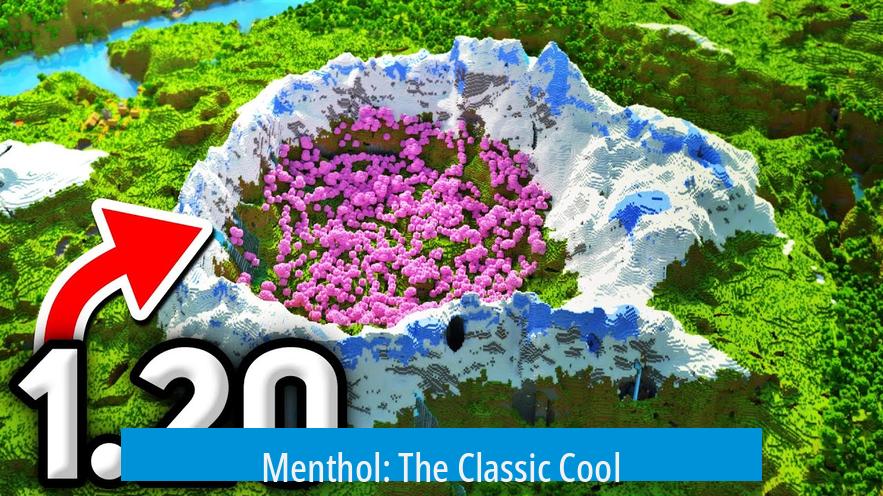Coolest Organic Compound Out There
Choosing the coolest organic compound depends on criteria such as structure, function, applications, and cultural impact. Menthol often tops the list due to its literal cooling effect and widespread use. However, organic chemistry offers many fascinating contenders from natural products, complex cages, bioactive molecules, and unique dyes making the answer far richer than a single compound.
Menthol: The Classic Cool

Menthol is famous for its cooling sensation on skin and mucous membranes. Found naturally in mint oils, it activates cold-sensitive receptors, eliciting a cooling effect without lowering temperature.
This property makes menthol popular in analgesics, oral hygiene products, and topical formulations. Its simple terpene structure and sensory impact make it iconic among organic compounds labeled “cool.”
Mustards: Historical and Biochemical Intrigue

Mustards, notably sulfur mustards (chemical warfare agents), have a grim history yet fascinating chemistry. They work by alkylating DNA, causing cellular damage.
Beyond toxicity, mustard plant derivatives (glucosinolates) play roles in flavor and plant defense. Their chemistry involving reactive sulfur compounds and bioactivity offers diverse interest.
Cage Compounds: Cubane and Dodecahedrane
Cage-like molecules possess highly symmetrical 3D architectures. Cubane (C8H8) is a cube of eight carbons forming highly strained bonds, making it a remarkable synthetic challenge.
Dodecahedrane is a carbon cage shaped like a dodecahedron, a regular polyhedron with 12 pentagonal faces. Its complex synthesis is a milestone in total synthesis chemistry. It fascinates chemists with its beauty, symmetry, and construction difficulty.
Venom-Derived Compounds: Tumorpaint
Biologically derived compounds from venoms inspire novel medical tools. For example, Tumorpaint uses a peptide from Israeli scorpion venom that selectively binds to cancer cells. It fluoresces upon binding, aiding surgeons in dark tissues.
This revolutionary application of organic peptides blends natural product chemistry with clinical innovation and targeted therapy.
Psychoactive and Neurotransmitter Analogs
Compounds like ibogaine, psilocybin, THC, and LSD intrigue due to their interaction with the nervous system. They mimic or modulate endogenous neurotransmitters affecting cognition, perception, and mood.
Their unique structures incorporate rings, heteroatoms, and stereochemistry enabling receptor binding. Interest in their therapeutic potential revitalizes study of these psychedelics as cool organic molecules.
Rhodamine B: Color and Biological Tracking
Rhodamine B is a dye characterized by dramatic color changes—turning brilliant fuchsia when wet. Its structure includes conjugated aromatic systems enabling strong fluorescence.
Used in wildlife tracking, it permanently incorporates into bones and teeth. This property helps monitor vaccination in wild animals by creating visible marks without harm, showcasing practical organic chemistry.
Photochromic Dyes: Spirooxazines and Spiropyrans
These dyes exhibit photochromism—a reversible change in color when exposed to UV light. Their spiro-structure breaks open under UV exposure to form a conjugated pi-system, resulting in visible color shifts.
Applications include molecular switches, sensors, and smart materials demonstrating dynamic organic reactivity controlled by light.
Dextromethorphan: Structural Complexity and Medicine
Dextromethorphan combines various organic features: aromatic rings, nitrogen and oxygen heteroatoms, bridged rings, and chirality. It serves as an over-the-counter cough suppressant with central nervous system activity.
This molecule exemplifies complexity in structure and everyday utility, which intrigues those studying organic chemistry’s real-world impacts.
Capsaicin and Cyclopamine: Biological Activity
- Capsaicin: Responsible for chili peppers’ heat, activating pain receptors while holding medicinal potential in pain relief.
- Cyclopamine: A natural product causing birth defects in sheep, it inhibits Hedgehog signaling pathways, important for developmental biology and cancer research.
Taxol: A Natural Product Success Story
Taxol (paclitaxel) is a complex diterpenoid used in cancer chemotherapy. It stabilizes microtubules, inhibiting cell division. Taxol’s structure and synthesis challenges have made it a classic study subject in natural product chemistry.
Poisonous Natural Products
- Maitotoxin: The largest and among the most potent marine toxins.
- Tetrodotoxin: A pufferfish toxin blocking nerve function at sodium channels.
- Strychnine: A highly toxic alkaloid affecting neuromuscular junctions.
Such compounds feature intricate polycyclic and heteroatom-rich structures, posing synthetic challenges and biological insights.
Additional Notable Cool Compounds
- Covalent Organic Frameworks (COFs): Extended organic polymers with tunable porosity, used in gas storage and catalysis.
- Nucleotides, especially Guanine: Fundamental genetic building blocks with complex aromatic structures.
- Squaraine Rotaxanes: Synthetic molecules with unique optical properties useful in advanced materials.
- Temozolomide: Chemotherapy drug with intriguing chemical properties relating to stability and reactivity.
Summary of Key Points
- Menthol is often cited as the coolest organic compound due to its direct cooling effect.
- Cage molecules like cubane and dodecahedrane display remarkable 3D symmetry and synthetic challenge.
- Venom-derived compounds, such as tumorpaint peptides, combine bioactivity with medical innovation.
- Psychoactive substances reveal complex interactions of organic molecules with the nervous system.
- Photochromic dyes and rhodamine B demonstrate dynamic optical properties with practical uses.
- Natural products like taxol and poisonous alkaloids reflect complex structure and profound biological roles.
- Advanced materials like COFs expand the frontier of organic chemistry into functional polymers.
What makes menthol the “coolest” organic compound?
Menthol creates a cooling sensation on the skin and in the mouth. This simple effect has made it widely used in many products. Its unique ability to trigger cold-sensitive receptors is a key reason people find it cool.
Why are cage compounds like cubane and dodecahedrane considered fascinating?
Cage compounds have highly symmetric, 3D structures that are unusual in organic chemistry. Dodecahedrane is especially prized for its beauty and synthetic challenge. These structures inspire much research due to their stability and shape.
How does Tumorpaint work for cancer surgery?
Tumorpaint is a peptide from scorpion venom that binds only to cancer cells. It fluoresces under special light, helping surgeons see tumors clearly. This selective binding improves precision during removal of cancer tissue.
What makes photochromic dyes like spirooxazines interesting?
These dyes change color when exposed to UV light due to a structural switch. The process breaks a bond and forms a conjugated system, which absorbs visible light differently. This property has applications in sensors and smart materials.
Why is dextromethorphan considered a complex organic compound?
Dextromethorphan has multiple features: aromatic rings, heteroatoms like oxygen and nitrogen, bridged rings, chiral centers, and quaternary carbons. It’s also a common over-the-counter medicine, combining complexity and practical use.





Leave a Comment